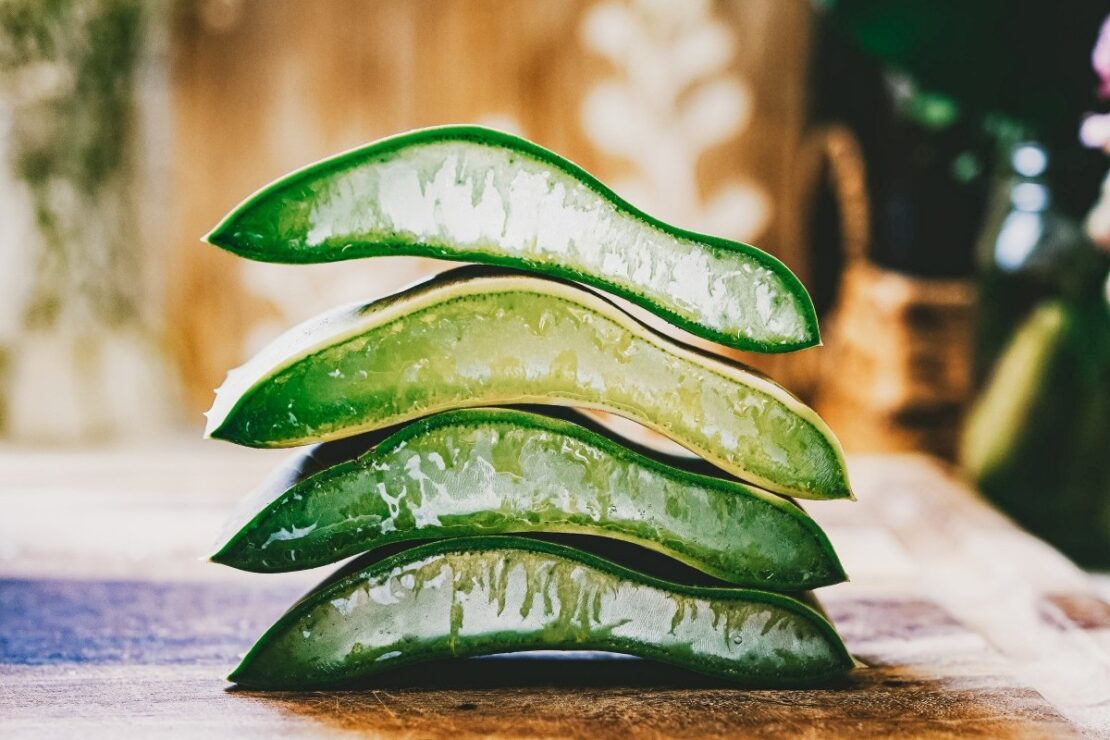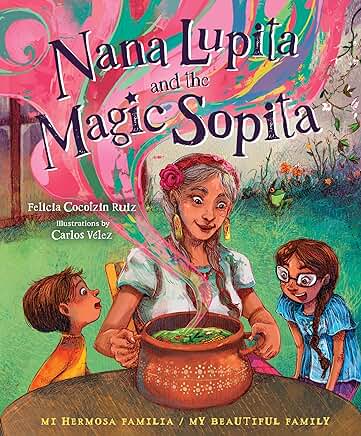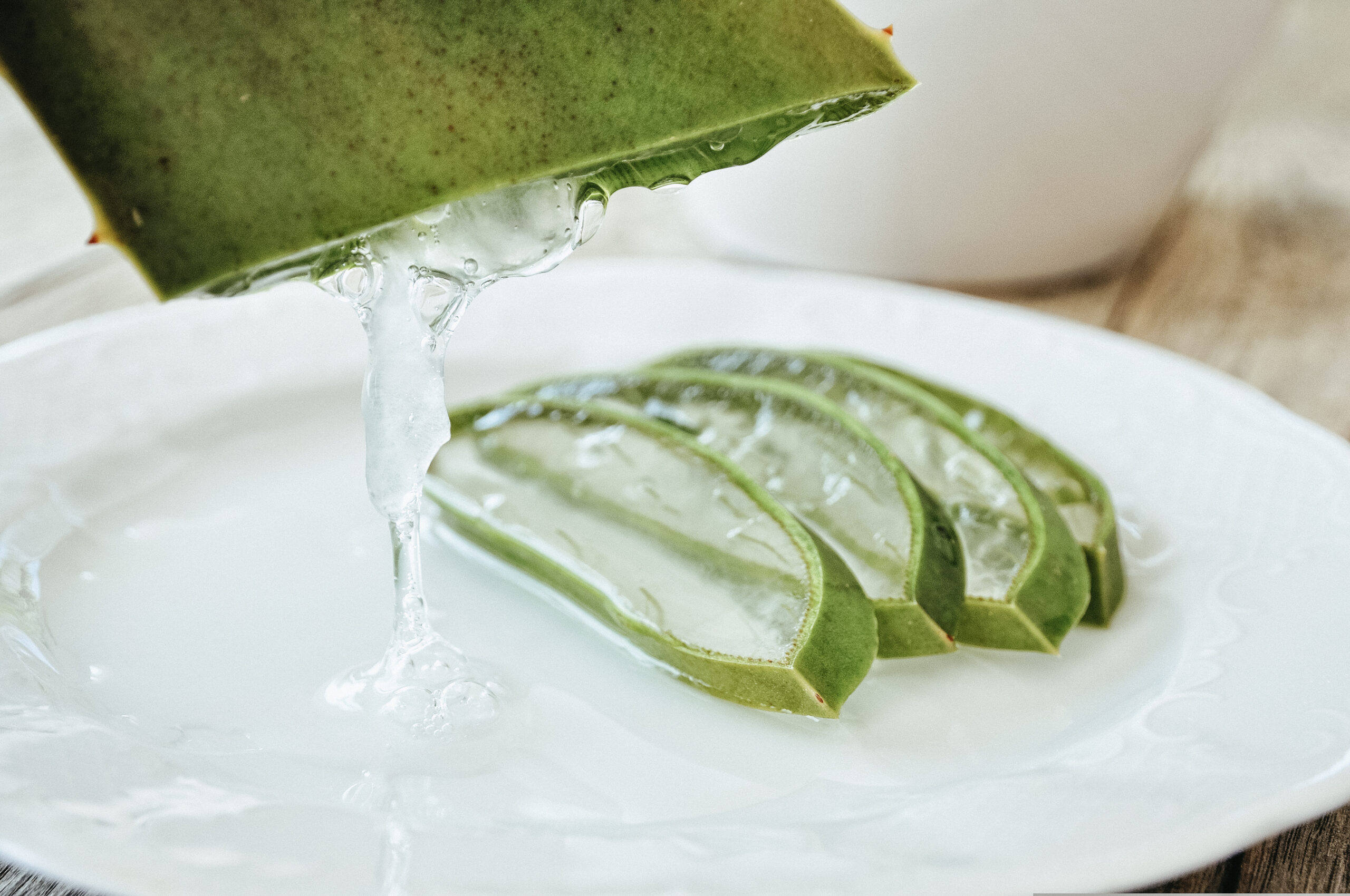
Cucumber Aloe Vera Water for Digestion and Immune Support
Aloe vera, often called the “plant of immortality,” has long been revered around the world not only for its beneficial properties but also for its spiritual significance. This succulent, known for its thick, fleshy leaves filled with soothing gel, has a rich history in my culture, one that has been passed down from generation to generation such as in the aloe vera water recipe below.
Believed to have originated in the Arabian Peninsula, aloe vera has found its way into cultures worldwide, but its prominence in Mexican herbalism is particularly noteworthy and a large reason why I made certain to include it in my children’s book ––Nana Lupita and the Magic Sopita.

In the book, Nana Lupita is a curandera like me, who uses sabila (aloe vera) in both physical and spiritual realms. It was important to me to have the illustrator include aloe vera in Nana’s yard for herbal use and also by her back door for protection.
In traditional Mexican herbalism, many curanderas use the gel topically for its diverse therapeutic benefits for minor burns, cuts, and skin irritations. Its anti-inflammatory and antibacterial properties make it a staple in many of our “first aid kits.” Beyond topical applications, aloe vera is also consumed as a beverage. It’s believed to aid digestion, support the immune system, and help regulate blood sugar levels. Large fresh leaves can often be found at our local Mexican grocery stores and I actually have a recipe using fresh aloe in my first book, Earth Medicines, where I include cucumber, chia seeds, and turmeric to make a refreshing medicine water—you can find that recipe below.
So, although we deeply value the physical benefits of aloe vera, this special plant also holds a sacred place in our spiritual practices, too. The aloe plant is often associated with protection and so it is not uncommon for people who grew up with this understanding to place a plant in their home, especially near doors, to ward off negative energies and promote a harmonious environment. I was taught that it is a plant that is so full of water, that it is actually the water that is absorbing the negative energies. Aloe is also a symbol of resilience as it thrives in arid conditions such as the Sonoran Desert where I live. Its ability to flourish despite adversity is often likened to the human spirit. What a beautiful message to come home to.
 Sabila is more than just a plant; for me it is a bridge connecting ancient wisdom with modern practices. For many of us of Mexican descent, its dual role in herbalism and spiritualism highlights a profound respect for nature and the intricate relationship between health and spirituality. Aloe vera serves as a powerful reminder of the enduring legacy of traditional knowledge and the timeless connection between humans and the natural world. Thank you to all of the nanas who passed this knowledge down to me –– I feel you are also at my doorway protecting me and my family.
Sabila is more than just a plant; for me it is a bridge connecting ancient wisdom with modern practices. For many of us of Mexican descent, its dual role in herbalism and spiritualism highlights a profound respect for nature and the intricate relationship between health and spirituality. Aloe vera serves as a powerful reminder of the enduring legacy of traditional knowledge and the timeless connection between humans and the natural world. Thank you to all of the nanas who passed this knowledge down to me –– I feel you are also at my doorway protecting me and my family.
To learn more about Nana Lupita’s other favorite plants, you can check the book out at your local library or buy it anywhere books are sold. Shop local and support independent booksellers!
From Nana Lupita and the Magic Sopita, by Felicia Cocotzin Ruiz. Illustrated by Carlos Vélez. Published by Gibbs Smith in July, 2024.

Cucumber Aloe Vera Water
This herbal aloe vera water features not only cucumbers and aloe vera, but also lime, turmeric, and chia seeds for a refreshing digestive and immune support.
Makes 4 servings
4 cups water
1 large cucumber, peeled, chopped
1 cup fresh lime juice
1 teaspoon ground turmeric
1 tablespoon chia seeds
1/2 cup fresh aloe vera gel, store-bought for consumption or harvested from an aloe vera leaf (see below)
Natural sweetener (honey or maple syrup, optional)

How to Prepare Aloe Vera Gel
You can find fresh aloe vera leaves at most Mexican grocery stores. To prepare the aloe vera gel, first trim the base and the top of the leaf. Drain the aloin (yellow substance) from the leaf by placing it in an upright container or in your kitchen sink for about 10 minutes. You will see the aloin ooze out from the bottom. Although it is not toxic, it has a strong bitter flavor. After 10 minutes, place the aloe vera with the flat side down on a cutting board and slice off the spiny sides. Using a vegetable peeler or small paring knife, remove the bright-green layer. Use a spoon to remove the gel or slide your knife under the gel to carefully release it from the other side. You can now cut your gel into small pieces and refrigerate.
From Earth Medicines: Ancestral Wisdom, Healing Recipes and Wellness Rituals from a Curandera, by Felicia Cocotzin Ruiz. Published by Roost Books in September, 2021.
You can purchase Nana Lupita and the Magic Sopita at Bookshop.org or Amazon.









